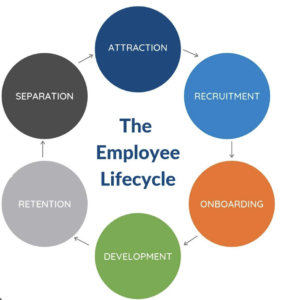As a manager, managing difficult situations in the workplace is inevitable. Whether it’s resolving conflict, addressing bullying, or handling staff disagreements, your approach can make a significant difference in maintaining team morale and productivity. When not properly managed, these issues can snowball, creating a toxic environment that impacts team culture and effectiveness. Here are key strategies to handle difficult situations within your team and maintain a healthy, high-performing workplace.
Address issues early and proactively
The earlier you address issues, the easier they are to manage. Letting conflict or negative behaviour fester can lead to resentment and escalate into larger problems. Encourage open communication within your team so that concerns can be raised early. Create a culture where employees feel comfortable speaking up, knowing their concerns will be taken seriously.
Actionable tip: Hold regular one-on-one meetings with your team members to discuss both their work and any interpersonal issues they might be facing.
Be a neutral mediator in conflicts
When conflict arises, your role as a manager is to act as a neutral mediator. Avoid taking sides and instead focus on resolving the issue in a way that’s fair to all parties involved. Listen actively to understand the root cause of the conflict and help team members see each other’s perspectives. This can often lead to a more constructive discussion and a quicker resolution.
Actionable tip: Use “I” statements, such as “I understand that you both have different views on this,” to ensure you’re neutral and not escalating the conflict.
Tackle bullying and toxic behaviour head-on
Bullying and toxic behaviour can severely impact team dynamics and morale. If you suspect bullying is occurring, investigate immediately and take appropriate action. As well as being an ethical issue, employees who feel unsafe or unsupported can become disengaged, lowering overall team performance. Make it clear that bullying, harassment, or discrimination of any kind will not be tolerated in your team.
Actionable tip: Implement a clear anti-bullying policy and ensure all team members are trained on what constitutes unacceptable behaviour. Encourage an open-door policy where staff can report issues without fear of retaliation.
Foster a collaborative team culture
Preventing difficult situations before they arise starts with building a positive, collaborative team culture. Create opportunities for team members to bond, collaborate, and understand each other’s strengths and weaknesses. A team that trusts and respects one another is less likely to experience major conflicts.
Actionable tip: Organise team-building activities, both formal and informal, to help team members get to know one another better. This can help reduce misunderstandings and foster better communication.
Set clear expectations and boundaries
When managing difficult staff members, it’s crucial to set clear expectations from the outset. Define roles, responsibilities, and the behavioural standards you expect from your team. Make sure all employees understand what is acceptable conduct, and what will not be tolerated. Consistently enforce these expectations to prevent potential conflicts.
Actionable tip: Establish a clear code of conduct and communicate it to your team. Include it in your onboarding process and refer to it regularly to remind employees of your expectations.
Manage performance issues early
Difficult staff members often exhibit performance issues that, if not addressed, can lead to resentment and friction with other team members. It’s important to deal with performance problems early on by providing constructive feedback and clear goals for improvement. Be specific about what needs to change and offer the support necessary to help the employee succeed.
Actionable tip: Set up regular performance reviews or feedback sessions to address any concerns as soon as they arise. Use these meetings as an opportunity to coach employees, not just to reprimand them.
Encourage open communication
Open communication is essential for resolving disagreements and preventing misunderstandings. Encourage team members to express their concerns directly and respectfully. When employees feel they can share their thoughts in a safe environment, it reduces the likelihood of tension escalating into conflict.
Actionable tip: Foster an “open-door” policy where employees can approach you with issues at any time. Actively listen without judgment, and reassure them that their concerns will be listened to and addressed where possible.
Lead by example
As a manager, your behaviour sets the tone for your team. Model the values and behaviours you want to see in your employees, including respect, collaboration, and problem-solving. When you remain calm, composed, and solution-focused during difficult situations, your team will likely follow suit.
Actionable tip: When conflicts arise, stay calm and focus on finding solutions rather than placing blame. Your leadership style will influence how your team responds to challenges.
Use conflict resolution techniques
Sometimes, conflicts cannot be resolved through basic communication. In these cases, employing formal conflict resolution techniques can help you in managing difficult situations. Techniques such as mediation, negotiation, and compromise can be powerful tools in helping team members work through differences.
Actionable tip: Consider using a structured conflict resolution model, like the Interest-Based Relational Approach (IBR) to ensure all parties’ needs are considered and met in a fair manner. The IBR approach to conflict resolution focuses on separating people from the problem, addressing the underlying interests of all parties involved, and fostering collaboration to find mutually beneficial solutions while maintaining positive relationships.
Conclusion
Managing difficult situations in your team requires a blend of proactive leadership, clear communication, and a commitment to fostering a positive work environment. By addressing issues early, setting clear expectations, and resolving conflicts constructively, you can prevent small grievances from escalating and protect your team culture. Keep in mind that a team that feels supported, respected, and heard is far more likely to thrive—both in terms of morale and productivity.
If you need advice and support to manage a difficult situation in your team, please get in touch.


Recent Comments